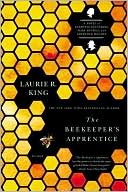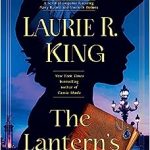 The House of Silk by Anthony Horowitz is a new/old Sherlock Holmes story. And I’m an absolute sucker for Sherlock Holmes stories.
The House of Silk by Anthony Horowitz is a new/old Sherlock Holmes story. And I’m an absolute sucker for Sherlock Holmes stories.
Why do I call it a new/old Holmes story? On the one hand, it is written in the style of the Conan Doyle canon. Watson is writing up one of Holmes’ cases. On very much the other hand, the case he is writing up is about a subject that proper Victorian gentlemen did not discuss. There are, after all, much worse things than prostitution.
So we come to the case of the House of Silk. This is purported to be a case that Watson is writing up very late in his own life, after Holmes has died in Sussex. It is written in the tone of a man reflecting back, and sometimes you can hear the nostalgia, and of knowledge of later times impinging on the then-present. In “Watson’s” preface to the story, he states that the case was too shocking to appear in print and too close to the halls of power to appear during wartime. He purportedly left the manuscript with his private papers, with instructions to his solicitors to have the manuscript published in a century.
And so we have the adventures of The Man in the Flat Cap and The House of the Silk.
The story itself takes place in 1890, a year before that infamous affair at Reichenbach Falls. Watson is still married to his first wife, Mary Morstan that was, but she has just left to nurse one of her former charges through a bout of influenza, and Watson has taken up his bachelor quarters with Holmes at 221B Baker Street for the duration.
An art dealer named Edmund Carstairs engages Holmes (and by association, Watson) to investigate the man in the flat cap who is terrorizing him. It should be an open-and-shut case. Carstairs returned from America a year ago. While he was there, he agreed to sell four impressionist masterpieces to a collector in Boston. The sale would have made his gallery a fortune. The paintings arrived in the States, but, the four Turner paintings just happened to be caught in the middle of a train robbery that went horribly wrong, and were burned to ash. Insurance covered the loss, but the buyer in Boston decided to go after the robbers. The gang, known as the Flat Cap Gang, were killed by the Boston police. All except one. Carstairs believes that the one remaining member of the gang, Keelan O’Donaghue, has followed him to London and is now following him around, leaving messages and generally terrorizing him. The question is, “to what purpose?” Not to mention, “why wait a year to follow?”
Holmes is intrigued by those questions. He is on the trail of a case that is, as usual, more than it appears. But in the process of finding the man who is trailing Carstairs, Holmes employs his “Baker Street Irregulars”, the band of street orphans that he hires to watch out when he cannot be everywhere at once. A new boy, Ross, finds not just the man in the flat-cap, but something to his own advantage, or so he thinks. After he collects his guinea from Holmes, he tries a bit of blackmail of his own, and is not just killed for his trouble, but tortured first. And his body left for Holmes to find with a bit of white silk ribbon tied to wrist as a message.
Holmes takes the message to heart and the investigation takes a more personal turn. When Mycroft comes to 221B in person to warn Holmes off, the younger Holmes delves even deeper, because he knows he is on the trail of something that someone does not want him to find. And that’s when the situation becomes truly dangerous, possibly even for Sherlock Holmes.
 Escape Rating B+:I enjoyed this visit with Holmes and Watson, but it didn’t quite fit for me. For one, I figured it out before the end. For another, the non-Conan Doyle version of Holmes that now lives in my mind is Laurie R. King’s, so any variant that has Holmes deceased, especially without Mary Russell, just sounds wrong to me. And the only time Watson survives Holmes is after Reichenbach, and we all know how that turned out.
Escape Rating B+:I enjoyed this visit with Holmes and Watson, but it didn’t quite fit for me. For one, I figured it out before the end. For another, the non-Conan Doyle version of Holmes that now lives in my mind is Laurie R. King’s, so any variant that has Holmes deceased, especially without Mary Russell, just sounds wrong to me. And the only time Watson survives Holmes is after Reichenbach, and we all know how that turned out.









Enjoyed this thoroughly. Except: Somersville [i.e., Somerville] and Charlestown are North of Boston, not south of it. There’s no way that the Flat Cap’s tenement hideout, in the South End, is anywhere near the Charles River in 1890: It’s a half a mile to the north, at least. Various typos and missing verbs drove me nuts. But, I too figured it out before the denouement. But I enjoyed it anyway. Oh, and the Dead Rabbits were a gang of New York in the 1850’s. They never operated in Boston. Mr. Horowitz. Check your geography and your facts. (yes, I know it’s fiction, but if you’re going to set it in a real locale, then you can use real geography and history).
And Horowitz is supposed to have done such a terrific job on the research for “Foyle’s War”, which I absolutely loved. Although that may be it, his research at home is more thorough than his research in the U.S.
Or maybe Watson’s memory of what he was told was faulty, and that’s where the blame lies? He is supposed to have moved things around and renamed people and places to obfuscate identities.
But I agree, either go all the way fictional on the geography or all the way factual, but it’s generally a bad idea to mix the two–it disrupts the ‘willing suspension of disbelief’ for those who know the true lay of the land.